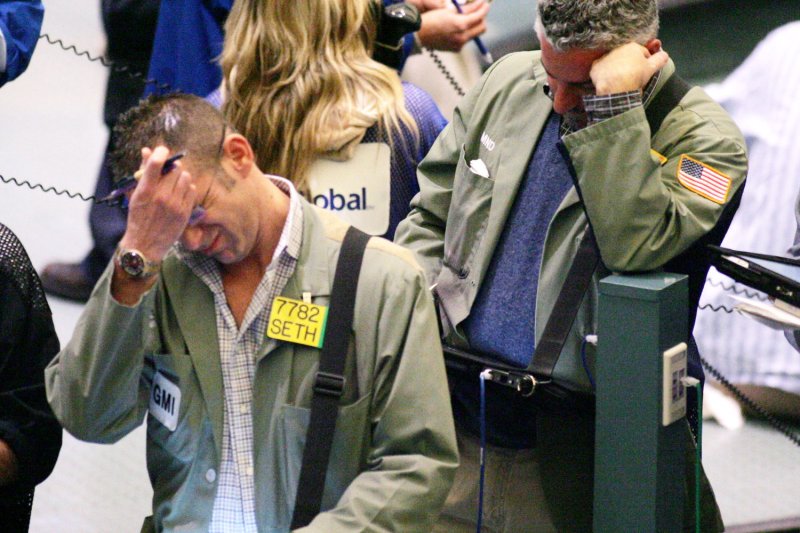Crude oil prices move lower after a circuit breaker on the Chinese stock exchange triggers an early close to trading for the second time in less than a week. File photo by Monika Graff/UPI |
License Photo
NEW YORK, Jan. 7 (UPI) -- A second emergency halt to trading on the Chinese stock market in less than a week sent crude oil prices tumbling further in early Thursday trading.
Trading on major Chinese markets was halted within the first 30 minutes after an emergency "circuit breaker" was triggered when shares fell 7 percent at the open. It's the second time this week trading was closed early because of steep declines in net share value and Thursday marked the shortest trading day ever in Chinese capital market history.
Crude oil prices spiked Monday, the first full trading day of 2016, amid escalating tensions between Iran and Saudi Arabia, but the rally faded by the closing bell as economic concerns resurfaced. Brent crude oil started trading Thursday in New York at $33.43 per barrel, down about 2.3 percent. West Texas Intermediate, the U.S. benchmark price for crude oil, was down 2.4 percent to $33.14.
WTI held a brief premium against Brent in late December as the first cargo of U.S. crude oil was loaded for exports after a 40-year ban was lifted. The White House last year said the United States was already exporting around 4 million barrels per day in the form of refined petroleum products and had waivers in place to export 500,000 bpd of conventional crude oil before the ban was lifted.
Crude oil prices are moving lower as metrics continue to show the market is oversupplied with crude oil against the backdrop of slow economic growth. A research note from Oxford Economics sent by email said the U.S. economy was expected to grow at an average rate of 1.8 percent per year for the next decade, down from its previous estimate of 2.2 percent.
"We continue to expect a rebound in productivity and potential output growth, but a less rosy one than previously," it said.
In Europe, Eurostat, the statistical office for the European Union, reported a 0.3 percent decline in retail trade for the 19 countries that use the euro. Unemployment was around 10.5 percent in November, down 0.1 percent from the previous month. By contrast, the U.S. Labor Department reported a rate at around 5 percent, with initial claims for unemployment falling 10,000 to a seasonally adjusted 277,000 for the week ended Jan. 2.















